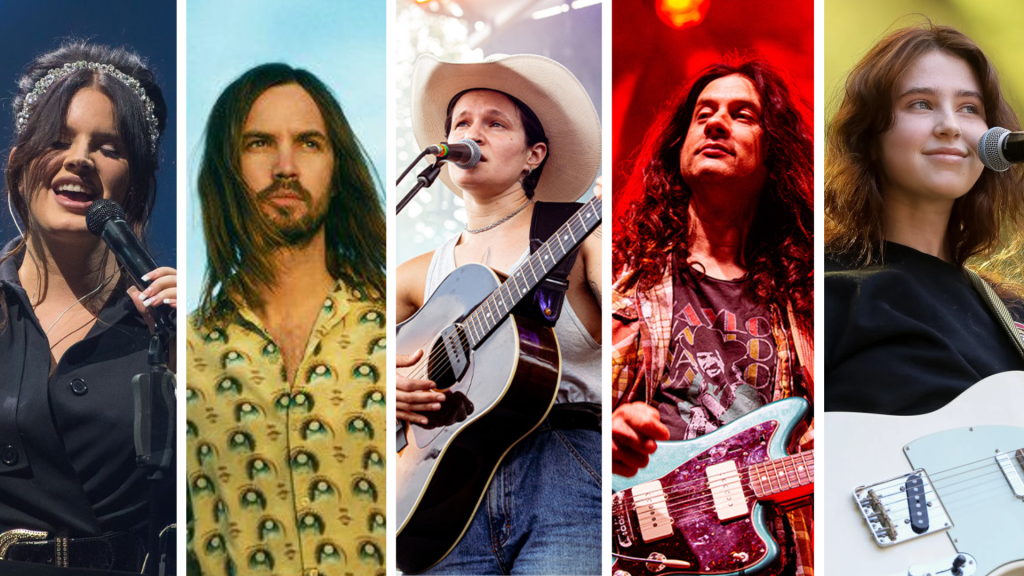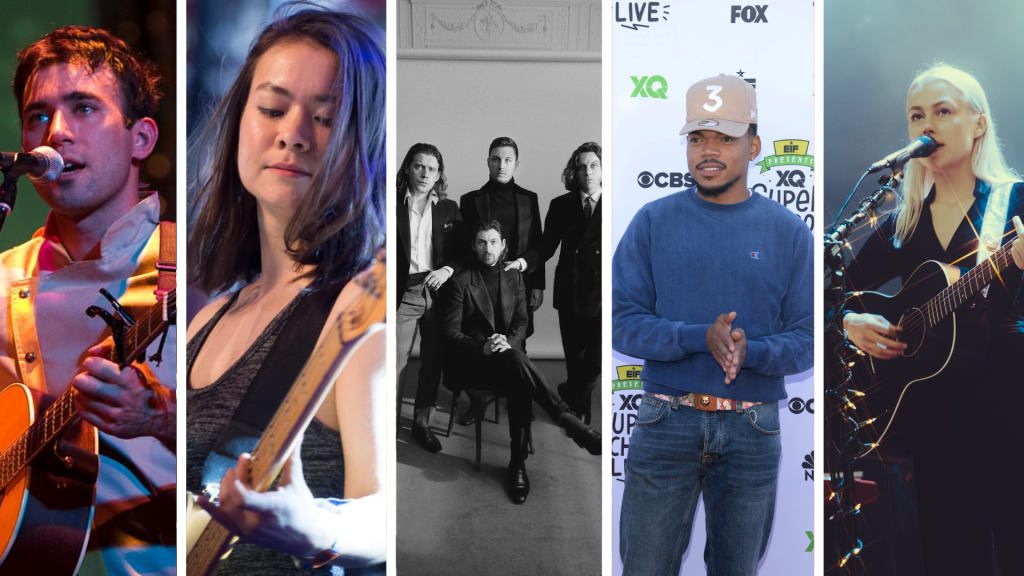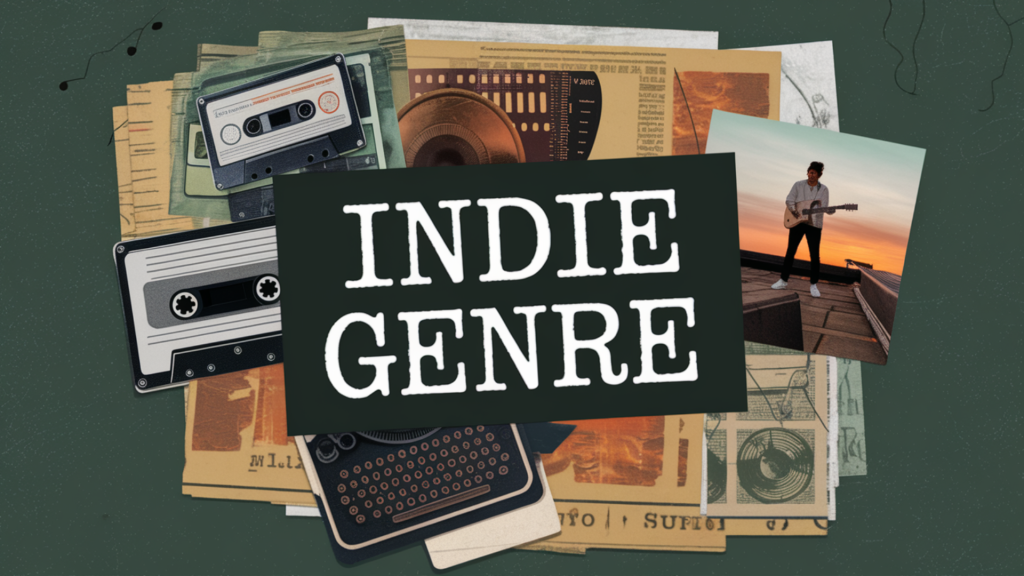The term indie has evolved from a simple shorthand for independent to a powerful cultural marker in music and film.
Yet, confusion often surrounds what the indie genre truly entails. Is it a business model? A sound? A mood?
This blog primarily defines the indie genre, focusing on its key characteristics and style, and then clarifies its historical connection to the concept of independent music.
What is the Indie Genre?
The indie genre is a musical style that emphasizes rawness, self-reflection, and creative freedom.
Though it originated from the independent music scene, it has grown into a distinct sonic and cultural identity.
Initially rooted in post-punk and alternative rock from the 1980s and 1990s, the indie genre is now recognized for its emotional honesty, raw production, and non-mainstream appeal.
Indie music is often characterized by:
- Lo-fi production: Accepting imperfection for emotional effect
- Unconventional instrumentation: Blending acoustic and analog elements
- Introspective or poetic lyrics: Personal storytelling is central
- Minimalist visuals and album art: Often vintage or handmade in style
Subgenres like indie rock, indie folk, and indie pop have emerged over time. Artists such as Phoebe Bridgers and Mac DeMarco reflect these traits, each bringing a distinct voice to the indie style.
Notable Artists and Examples

The indie genre encompasses a diverse range of artists, from those on small labels to those with major label support who maintain the indie sound. Examples include:
- Lana Del Rey – A major-label artist with lush, melancholic, indie vibe.
- Tame Impala – Psychedelic pop with indie flair, now on a large label.
- Big Thief, Alex G – Indie, both in sound and in independent structure.
- Clairo – Started as an internet-based indie-pop sensation with DIY roots.
What is Independent Music?
Independent music refers to music that is created and distributed independently of major record labels.
It is a business model, not a genre. Independent artists maintain creative and legal control over their work and often distribute it via platforms like Bandcamp, SoundCloud, or DistroKid.
This model allows for artistic freedom but does not dictate a specific sound. Independent music can encompass a wide range of genres, including hip-hop, electronic, folk, jazz, and more.
For example, Chance the Rapper and Russ are independent artists, but they do not stylistically fall under the indie genre.
Signature Traits of Independent Music
Independent music is less about genre classification and more about autonomy, intent, and creative ownership. Here are its defining features:
- Production Style: Often home-recorded or self-funded; lo-fi quality is accepted and sometimes preferred.
- Lyrical Themes: Honest, experimental, and rooted in personal or community experience.
- Vocals: Unprocessed, emotionally direct, and intentionally raw.
- Instrumentation: DIY setups, acoustic elements, and genre-blending creativity.
- Visual Identity: Self-designed covers, low-budget videos, and grassroots vibes.
Notable Artists and Examples

Independent music encompasses a diverse range of styles, united by artist-led direction and independence from major record labels. Examples include:
- Sufjan Stevens: A self-released artist whose music blends folk, electronica, and personal narrative.
- Mitski: Signed to an indie label, her work balances emotional depth with independent production.
- Arctic Monkeys (early years): Rose via online buzz before joining the indie label Domino.
- Chance the Rapper: Broke into the mainstream with mixtapes, unsigned and self-managed.
- Phoebe Bridgers: Maintains complete artistic control under an indie label, known for her lyrical candor.
Indie vs. Independent: Clarifying the Confusion
Because indie originally meant independent, the terms are often confused. However, they now serve distinct purposes:
| Aspect | Independent Music | Indie Genre |
|---|---|---|
| Definition | Industry independence | Artistic/aesthetic identity |
| Label Association | No major label involvement | Can be on indie or major labels |
| Sound Range | All genres | Distinct indie style |
| Priority | Control, freedom, direct distribution | Expression, uniqueness, vibe |
How Independent Music Impacted the Indie Genre
The indie genre emerged from the independent music scene. In the early stages, artists such as Sonic Youth and The Smiths operated outside the mainstream, both in terms of their business model and their style. Over time, the indie aesthetic evolved into its own genre.
Today, many artists with an indie sound are no longer independent in structure. Acts like Tame Impala and Lana Del Rey may be signed to major labels but maintain indie sensibilities.
At the same time, independent artists like Alex G and Big Thief continue to embody both independence and the indie style.
Conclusion
The indie genre and independent music are interconnected but not identical. Indie has grown from a label status into a genre defined by style, emotion, and experimentation.
Independent music remains the foundation that enables these creative expressions, offering artists the freedom to innovate.
Ultimately, understanding both the indie genre and its independent roots enriches our experience as listeners and supporters of original, boundary-pushing music.





















